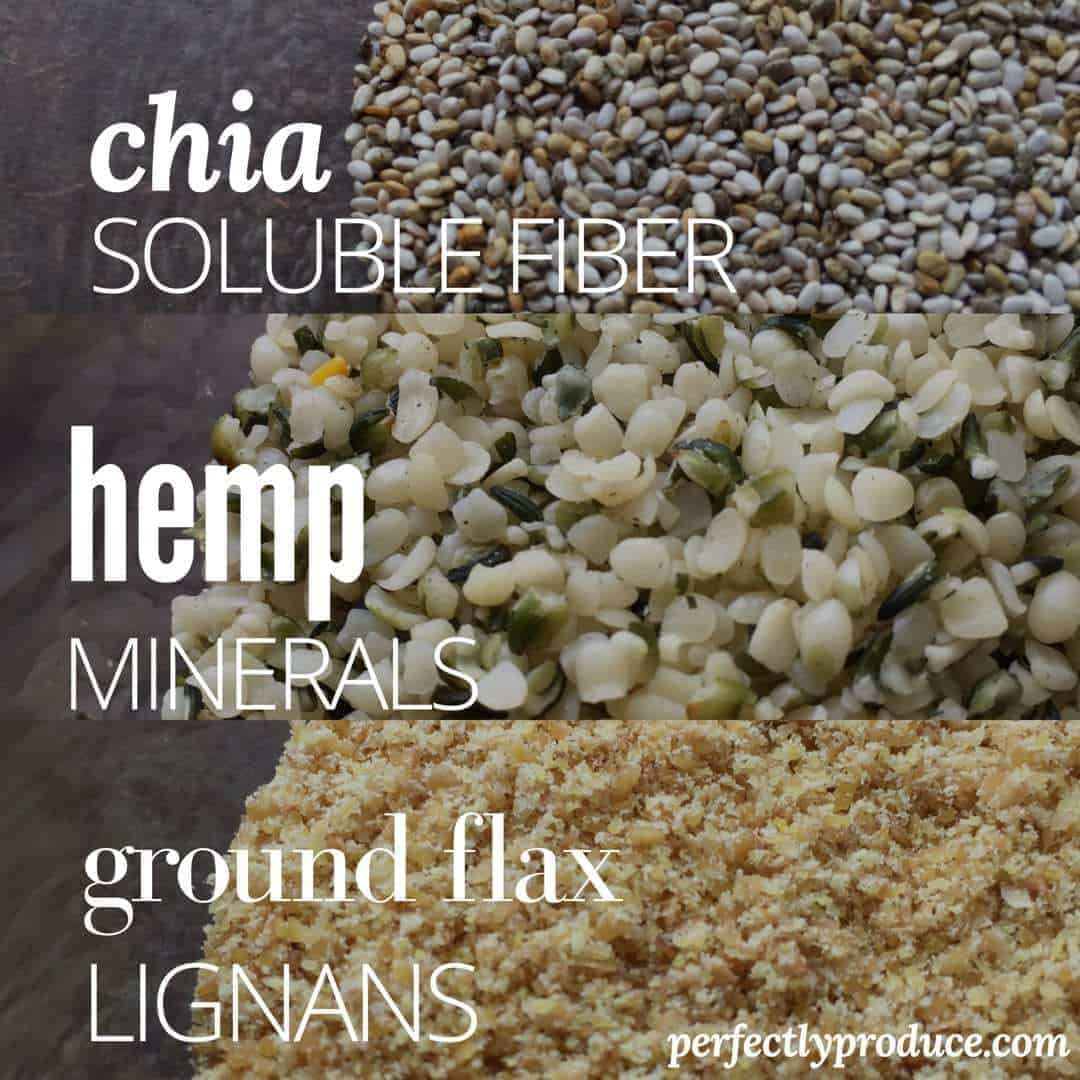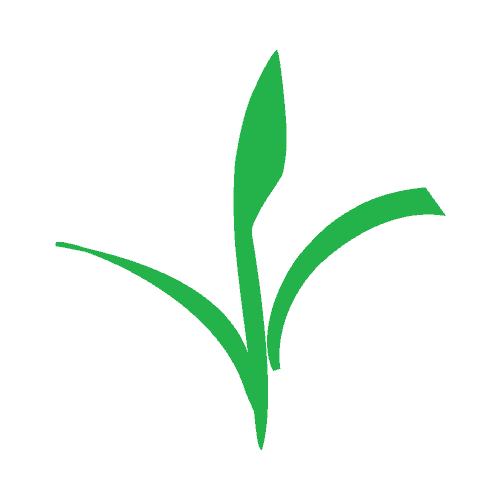 CARE Member Question:
CARE Member Question:
“I have a question about chia, hemp, and flax seeds. What are the unique differences between these and what are the benefits ( pros and cons ) of each?”
Answer:
The main difference between flax, chia, and hemp seeds are the ratio of minerals, fatty acids, fiber, and phytonutrients that they contain.
The top nutrients that seeds (like flax, hemp, chia and even less glamorized like sunflower and sesame) bring to the party are: minerals, fatty acids, fiber, and phytonutrients (especially polyphenols and lignans). The less glamorized sunflower seed is also a rich source of dietary vitamin E.
The ratio of these nutrients in each seed is what makes flax, chia and hemp seeds different.
Isn’t it all really about omega 3 fatty acids?
No.
Flax, hemp, and chia seeds are most known for providing omega 3 and omega 6 fatty acids.
We hear of omega fatty acids for their role in managing inflammation. The important thing to remember is that seeds do not contain the pre-formed variety of omega 3 called EPA (eicosapentaenoic acid) and DHA (docosahexaenoic acid) which, most notably, come from fish and seafood. EPA and DHA are the form of omega 3 most researched as having a beneficial effect on inflammation and cognition.
Flax, chia, and hemp contain the plant-based variety of omega 3 called ALA (alpha-linolenic acid). Our bodies, with all the right conditions, can convert ALA to EPA and DHA but it is not an efficient process and excess ALA can be pro-inflammatory.
The reason this is important is because omega 3 fatty acids no longer become the most important thing seeds contribute. What is much more exciting are the minerals, fiber, and phytonutrients and this is where flax starts to take the lead.
Why Flax? Lignans.
Ground flax (must be ground to access the lignans) is the richest dietary source of a fiber-type substance called lignans. Lignans are our very good friends in helping regulate hormone levels and protecting against hormone related cancer. Flax is also a powerful antioxidant. I have done a full post here on the benefits, dosage, and how-to use flax seeds.
Why Hemp? Minerals.
Now we are talking about the minerals. I have hemp in my fridge because of the natural magnesium and iron hemp contains. Plant-based sources of iron is called non-heme iron and isn’t as readily absorbed by the body as heme iron (found in animal based products) but vitamin C helps this. Adding seeds to your CARE balanced plate and hitting your produce goals will ensure you have this vitamin C. I also love the softer texture of hemp seeds in smoothies compared to more noticeable chia seeds.
Why Chia? Soluble Fiber.
Now we get excited about soluble fiber. Rehydrated chia seeds are an incredible source of soluble fiber. Soluble fiber helps regulate the speed of your digestive system. Insoluble fiber (like in fruit skins) helps speed it up. Soluble fibers are essential to nourishing our native strains of gut bacteria and healing the digestive system in cases of IBS, constipation, and food intolerance.
CARE Serving Size Considerations – Recommend Amounts
Seeds (and nuts) are primarily a fat source. 1 tablespoon = 1 fat serving (or about 5 grams of fat).
Two tablespoons of seeds could be used for 1 protein serving, but remember now that you are also adding 2 fat servings to you meal. And that could be perfectly great, but if you have other fat sources in the meal, too, this is where incremental calories and slowing of the rate of weight loss sets in (this topic is covered in detail in the materials for CARE Step: Protein and Fats).
The research that has shown the most positive results to-date for using seeds and nuts to help reduce disease risk is an average of three tablespoons per day (in total from all sources including almonds and walnuts).
This works so easily with your CARE balanced plate and your addition of healthy fats at each meal and snacks.
The Bottom Line
Enjoy nuts and seeds often and appreciate the full variety of flax, chia, AND hemp seeds; they each have something unique to bring to the party!
Warmly,



Flax seeds are the worlds highest estrogen containing plant. For me that’s a big no no. They far surpass any other plant even soy beans. Far too many health websites overlook this which is very detrimental to the reader.
Hi John- Thank you for commenting. Estrogen and its role in cancer is a very serious and worthy topic for conversation. Fortunately, we continue to understand the evolving role of estrogen-like substances in foods (like flax and soy). In their whole food form, soy and flax actually demonstrate hormone regulating properties (decreasing the risk of hormone-related cancers). The American Cancer Society has evolved their positioning to now recommend whole foods sources of soy (like whole bean edamame, tofu, yellow and black soybeans, natto, and tempeh): https://www.cancer.org/healthy/eat-healthy-get-active/acs-guidelines-nutrition-physical-activity-cancer-prevention/common-questions.html
A literature review published in Feb 2018 reiterates this position for flax and breast cancer: https://www.ncbi.nlm.nih.gov/pubmed/29468163
For those interested, a further search can be found on PubMed using the key terms “estrogen and flax”: https://www.ncbi.nlm.nih.gov/pubmed
What is much less understand is the role isolated soy proteins play. Anytime we isolate a nutrient we alter how it responds in our body. I agree that these should be limited.
Again, John, thank you for contributing to this important conversation.